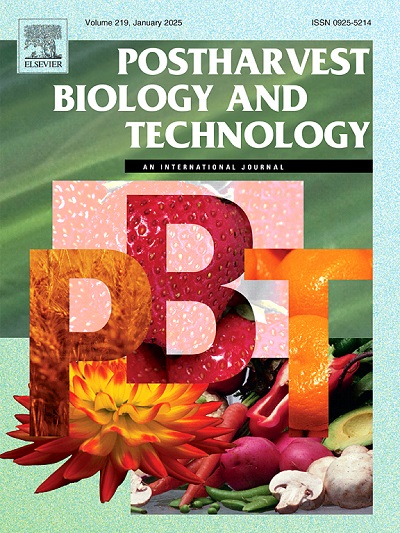Prediction of chilling injury and key indicator parameters in sweet potatoes using VNIR spectroscopy
IF 6.4
1区 农林科学
Q1 AGRONOMY
引用次数: 0
Abstract
Chilling injury (CI) in sweet potatoes, which leads to the undesirable accumulation of reducing sugars and renders them unsuitable for processing, is usually assessed through destructive analysis. This study was conducted to investigate the possibility of nondestructive estimation of CI and indicative parameters in intact sweet potatoes. CI indices were developed to estimate CI in ‘Beni haruka’ and ‘Hogammi’ sweet potato cultivars using firmness, total soluble solids (TSS), and malondialdehyde (MDA) as key indicators. Then, visible/near-infrared (VNIR) spectra in interactance mode, along with actual measurements of firmness, TSS, MDA, and CI index, were collected from 160 roots of each cultivar stored at 4 ℃ for 30 days. The data were categorized into calibration, cross-validation, and prediction sets, with preprocessing applied to optimize prediction models. After evaluating the predictive power of raw spectra with spectra preprocessed using various methods such as standard normal variate (SNV), multiplicative scattering correction (MSC), Savitzky-Golay 1st and 2nd order derivatives, partial least square regression (PLSR) was used to develop models correlating VNIR spectra with reference values of TSS, MDA, and the CI index. The models demonstrated promising results, and the regression coefficients for the prediction (Rp2) between the VNIR spectra and the measured values of TSS, MDA, and the CI index were 0.936, 0.902, and 0.812 for ‘Beni haruka’ and 0.847, 0.896, and 0.825 for ‘Hogammi’, respectively. The low standard error of prediction and bias values further indicated the model’s robustness, making these models fast and cost-efficient alternatives to traditional destructive methods for CI analysis. Further research on different cultivars could further improve model accuracy and reliability.
求助全文
约1分钟内获得全文
求助全文
来源期刊

Postharvest Biology and Technology
农林科学-农艺学
CiteScore
12.00
自引率
11.40%
发文量
309
审稿时长
38 days
期刊介绍:
The journal is devoted exclusively to the publication of original papers, review articles and frontiers articles on biological and technological postharvest research. This includes the areas of postharvest storage, treatments and underpinning mechanisms, quality evaluation, packaging, handling and distribution of fresh horticultural crops including fruit, vegetables, flowers and nuts, but excluding grains, seeds and forages.
Papers reporting novel insights from fundamental and interdisciplinary research will be particularly encouraged. These disciplines include systems biology, bioinformatics, entomology, plant physiology, plant pathology, (bio)chemistry, engineering, modelling, and technologies for nondestructive testing.
Manuscripts on fresh food crops that will be further processed after postharvest storage, or on food processes beyond refrigeration, packaging and minimal processing will not be considered.
 求助内容:
求助内容: 应助结果提醒方式:
应助结果提醒方式:


